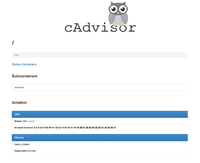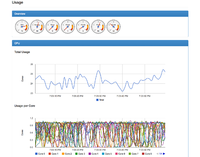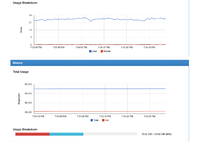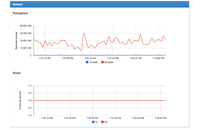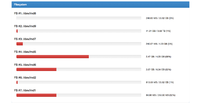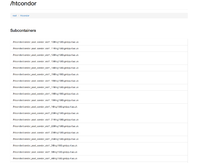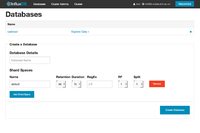Difference between revisions of "Monitoring Resource Usage of Jobs with cAdvisor"
| Line 22: | Line 22: | ||
Clicking on one of the listed jobs gives information about the resource usage of that job. | Clicking on one of the listed jobs gives information about the resource usage of that job. | ||
| − | The web UI is of limited use as it only shows data over the past minute. Using Grafana for visualizing data collected by cAdvisor and stored in InfluxDB is more interesting. | + | The web UI is of limited use as it only shows data over the past minute. Using Grafana for visualizing data collected by cAdvisor and stored in InfluxDB is more interesting. Alternatively, it should be possible for cAdvisor to send data to ElasticSearch https://github.com/google/cadvisor/issues/634. |
== Building cAdvisor == | == Building cAdvisor == | ||
Revision as of 18:19, 12 May 2015
Contents
Introduction
Google's cAdvisor (Container Advisor) provides information about the resources used by containers. A web UI is exposed at http://hostname:port/, and in addition data is exported to a central database. For sites running a batch system with cgroups enabled, cAdvisor can provide information about running jobs on worker nodes.
More information is available here: https://github.com/google/cadvisor
The main page of the UI shows an overview of CPU, memory, network and disk usage of the whole node.
You can then drill down and view information about individual jobs.
Clicking on one of the listed jobs gives information about the resource usage of that job.
The web UI is of limited use as it only shows data over the past minute. Using Grafana for visualizing data collected by cAdvisor and stored in InfluxDB is more interesting. Alternatively, it should be possible for cAdvisor to send data to ElasticSearch https://github.com/google/cadvisor/issues/634.
Building cAdvisor
Running cAdvisor
Example usage on a HTCondor worker node
/usr/local/bin/cadvisor -storage_driver=influxdb -storage_driver_host=hostname:8086 -storage_driver_db=database_name \ -storage_driver_password=password -storage_driver_user=user -storage_driver_secure=false -storage_driver_table=stats
where the InfluxDB hostname, database name, username and password should be changed as appropriate.
Installing & configuring InfluxDB
Download and install the rpm:
wget https://s3.amazonaws.com/influxdb/influxdb-latest-1.x86_64.rpm rpm -ivh influxdb-latest-1.x86_64.rpm
then start the service
service influxdb start
In a browser go to http://hostname:8083/ and login using the default username (root) and password (root). To create a database for cAdvisor, specify a database name in the 'Database Details' part of 'Create a Database' and click 'Create Database'.
You should see something like the following:
Once the database has been created, click on the database name and create a user by specifying the username and password in the 'Create a New Database User' section.
More information available at http://influxdb.com
Installing Grafana
Download and install the rpm:
rpm -ivh https://grafanarel.s3.amazonaws.com/builds/grafana-2.0.2-1.x86_64.rpm
and start the service
service grafana-server start
